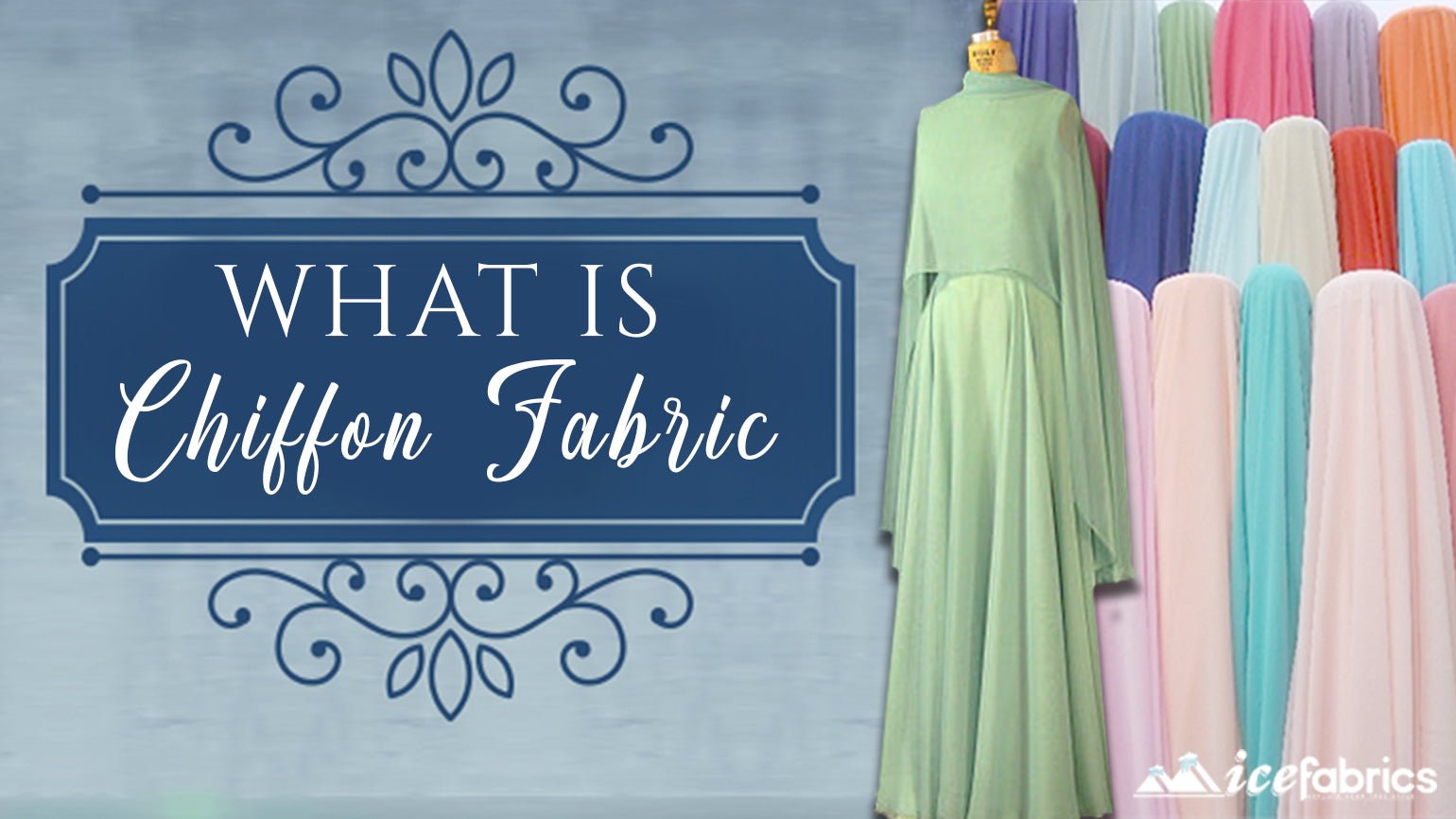Chiffon is mostly used to describe many fabrics that have similar qualities. The fabrics that are lightweight and have a transparent appearance are usually referred to as Chiffon.
This class of fabric was originally made up of silk. It was highly expensive and was highly used by high-class women of Europe and America. When it was initially produced in the mid of 19th century. Chiffon is a French word, it means fabric, but the word chiffon has become synonymous with any kind of shiny, sheer fabric woven in a particular style.
Origin of Chiffon
Chiffon fabric was initially produced in France, but as the Industrial age grows, its production increased worldwide. By the early 1900s, chiffon was being produced on a relatively large scale in the United States, and American manufacturers of this fabric began to show interest in replacing silk with another material for chiffon production.
The first silk-free chiffon was introduced to consumers in 1938. It was made from nylon, which at the time was predicted to be a great fabric to replace almost all types of organic textiles. However, serious problems soon emerged with nylon as chiffon fabric, and for a time most chiffon was remade from silk.
The first version of chiffon was initially produced in 1958, and most of the chiffon in today's world is made up of all synthetic material. Polyester chiffon fabric looks like silk but it is different in nature and characteristics from silk and not as soft as silk.
Present Chiffon Fabric
In this era, most of the chiffon is produced from polyester by producers. The producer of this attractive fabric has also worked with rayon in the making of chiffon. Cotton can also be used in some situations, but is relatively prone to pilling and is not as suitable for chiffon as many other synthetic or semi-synthetic materials.
Chiffon does not differ from a particular material but is distinguished by its unique production method. The weaving method used to make the cloth is called alternate S and Z twists, and the name comes from the shapes the yarn takes when used to make this fabric: S-shaped threads are intertwined with Z-shaped threads, resulting in a lightly pleated fabric. This encourages more stretching and gives a more textured look. This weaving method gives the rag a relatively coarse appearance.
The chiffon was originally worn as a status symbol, but now this fabric no longer provides this advantage as it can be made from relatively inexpensive textiles. Instead, it's a relatively common material used in everything from bows and ribbons to wedding dresses. People all over the world wear rags and continue to enjoy unshakable popularity.
It is worth noting that there are chiffon fabrics that emerged separately from the chiffon diaspora that emerged in France. For example, some indigenous peoples in Ethiopia and Eritrea have been making rags for hundreds of years.
Types of Chiffon Fabric
The originally produced French chiffon is one of the top garments in the world. Chiffon is the most common fabric made of silk, cotton, rayon, viscose, or polyester and is made of rigid yarn. Quite often, this luxurious fabric can be found in different types of chiffon dresses, evening dresses, hijabs, and jumpsuits.
Some of the types of chiffon fabrics are mentioned below
- Silk crepe soda
- Jacquard chiffon
- Double Face chiffon
- Silk satin chiffon
- Chameleon chiffon
- Chiffon with coating
- Pearl chiffon
- Chiffon with lurex
Chiffon Characteristics
Characteristics of chiffon fabric include:
1. Transparency:
The chiffon fabric has a transparent appearance and looks like a net or a fine net when seen with a magnifying glass.
2. Rough to the touch:
The chiffon has light creases due to the alternation of S-Twist and Z-twist threads.
3. Elasticity:
The rag looks a bit like elastane because it is woven in different directions. Because silk is naturally more elastic, the silk chiffon is slightly more elastic than the polyester chiffon.
4. Durability:
Chiffon fabric, both silk, and synthetic are extremely durable due to the twisting of the threads and the tight fabric of the fabric.
5. Shimmer:
The chiffon has a shiny finish. The silk chiffon has the highest shine, while the cotton chiffon has a matte finish.
FAQs
Is Chiffon Natural or Synthetic?
The chiffon fabric can be used for many purposes. But chiffon fabric can be made of many materials, such as cotton, synthetic fibers, or rayon. It is a natural, transparent quality, depending on how it is made.
How to Wash Chiffon?
- Hand washing is always the best and safest way to wash the rag.
- Add 2 caps or a portion of Delicate Wash to a sink or sink filled with cold water.
- Immerse the product and mix the water lightly with your hands so that the soap is evenly distributed. Leave on for up to 30 minutes.
- Rinse the item well, running cold water through it until the water is no longer soapy.
- Deformation. Instead, squeeze the water out of the article.
Is Chiffon Breathable?
The cotton chiffon is breathable and incredibly pleasant to the touch. Chiffon is known to be a very thin fabric in the world and lightweight. The major characteristic of the chiffon is that it will not make you sweat when you are outside wearing chiffon fabric. While wearing chiffon fabric you can breathe well, so you'll feel always cool-wearing chiffon in summer. But the point is which type of chiffon are you going to wear, and it is up to you your choice.
Is Chiffon Stretchy?
The chiffon is not usually an elastic fabric. But stretching can be made of stretchy fibers. Elastic knitwear is a fabric that is woven for stretching in the same way that knitwear is for stretching.
It depends on the fabrics used to create the chiffon. The best way to stretch the fabric is to wear it. The fabric easily loses its shape over time.

